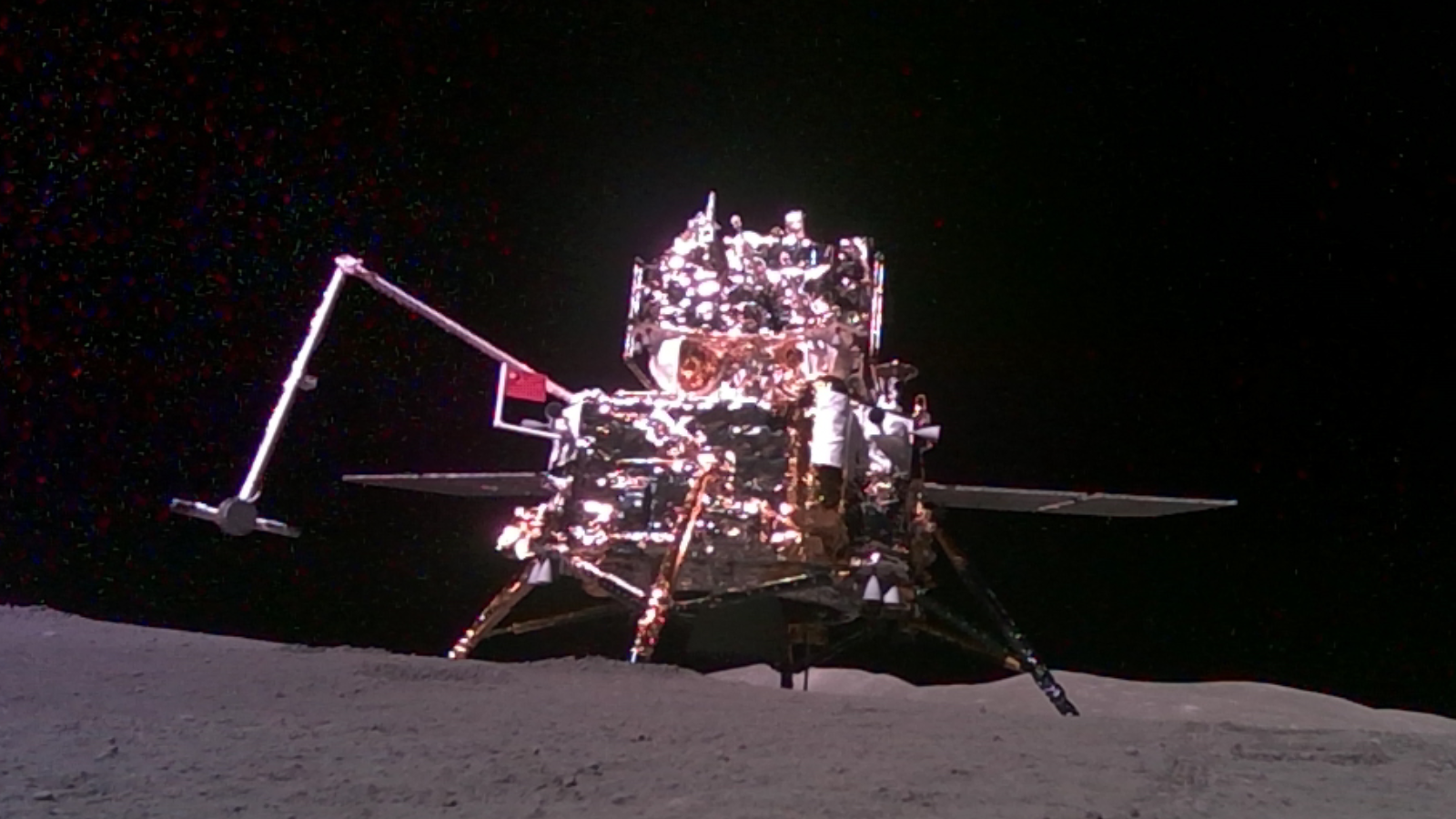Annular Solar Eclipse of May 20, 2012 (Photo Guide)
Coming Soon - Annular Solar Eclipse
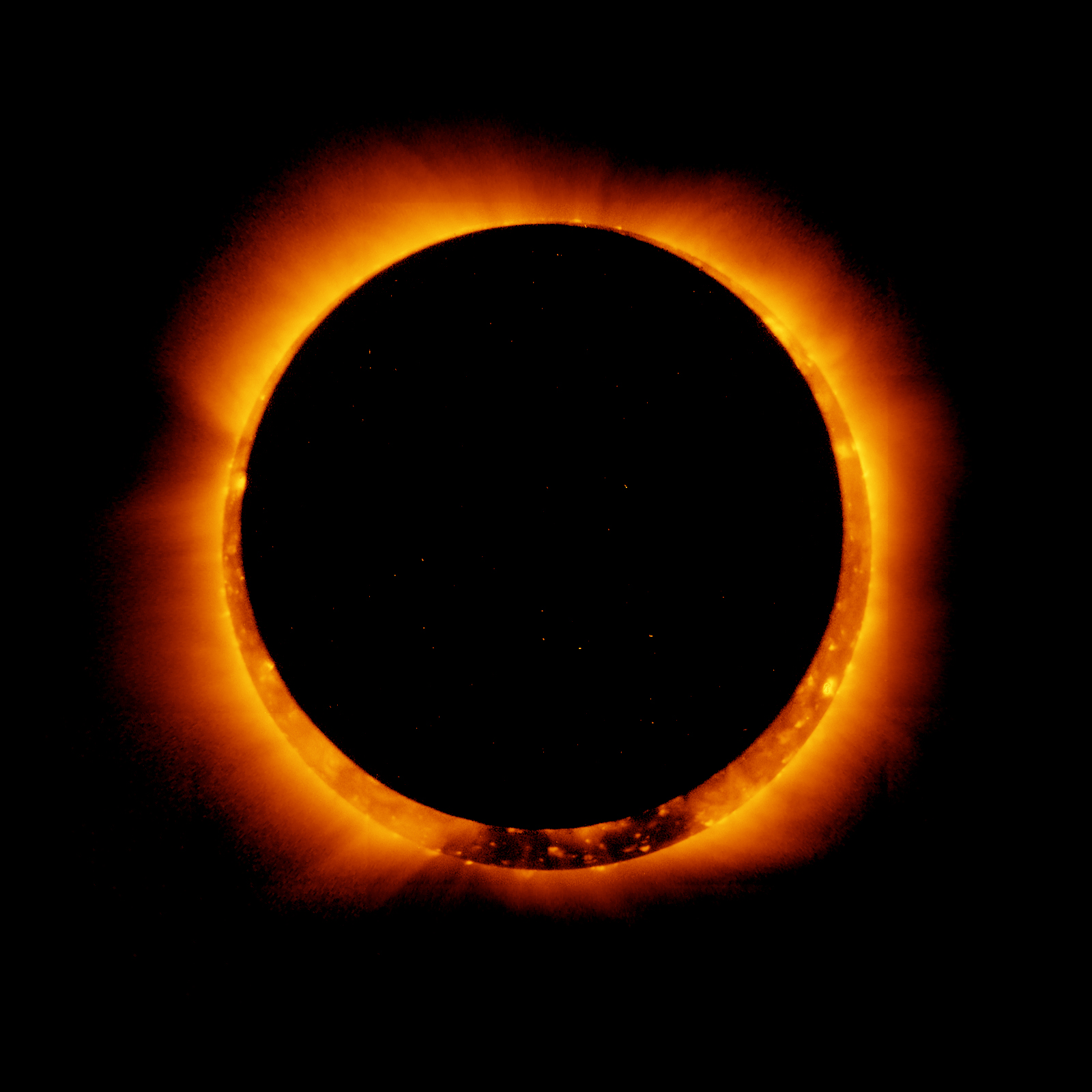
On May 20, 2012, an annular solar eclipse of the sun will occur when the moon will block about 94 percent of the sun.
Annular Solar Eclipse Track: May 20, 2012
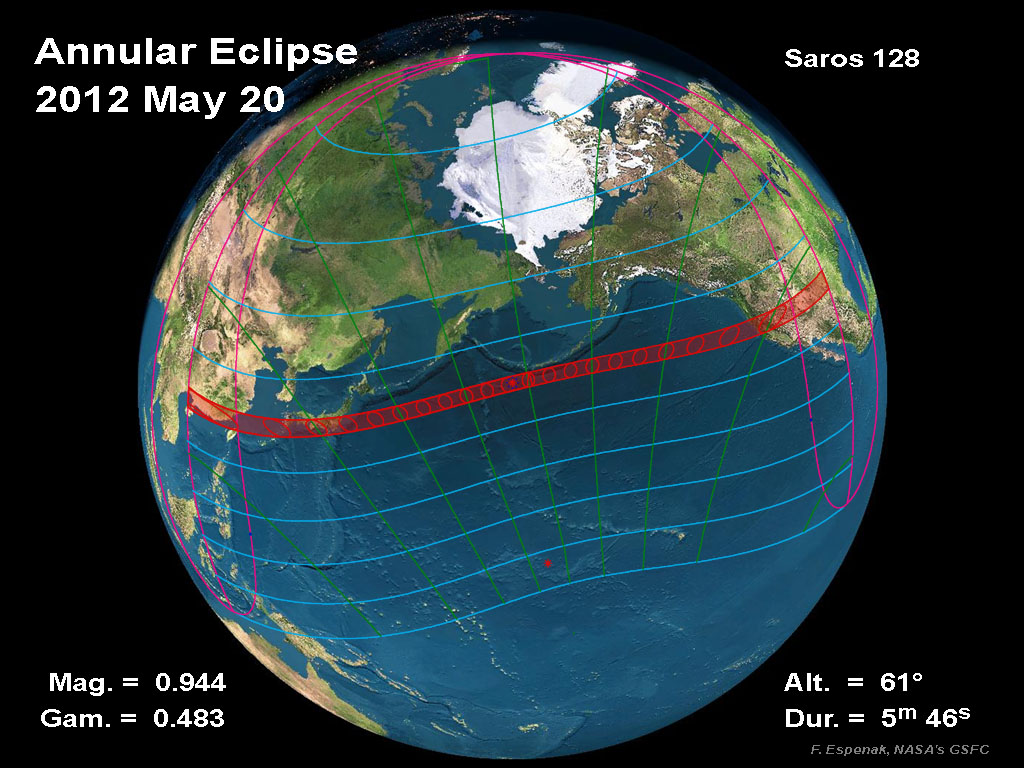
This NASA graphic depicts the path of best viewing for the annular solar eclipse of May 20, 2012. For some observers in East Asia, the solar eclipse begins on May 21, 2012.
Annular Solar Eclipse of May 20, 2012, Map
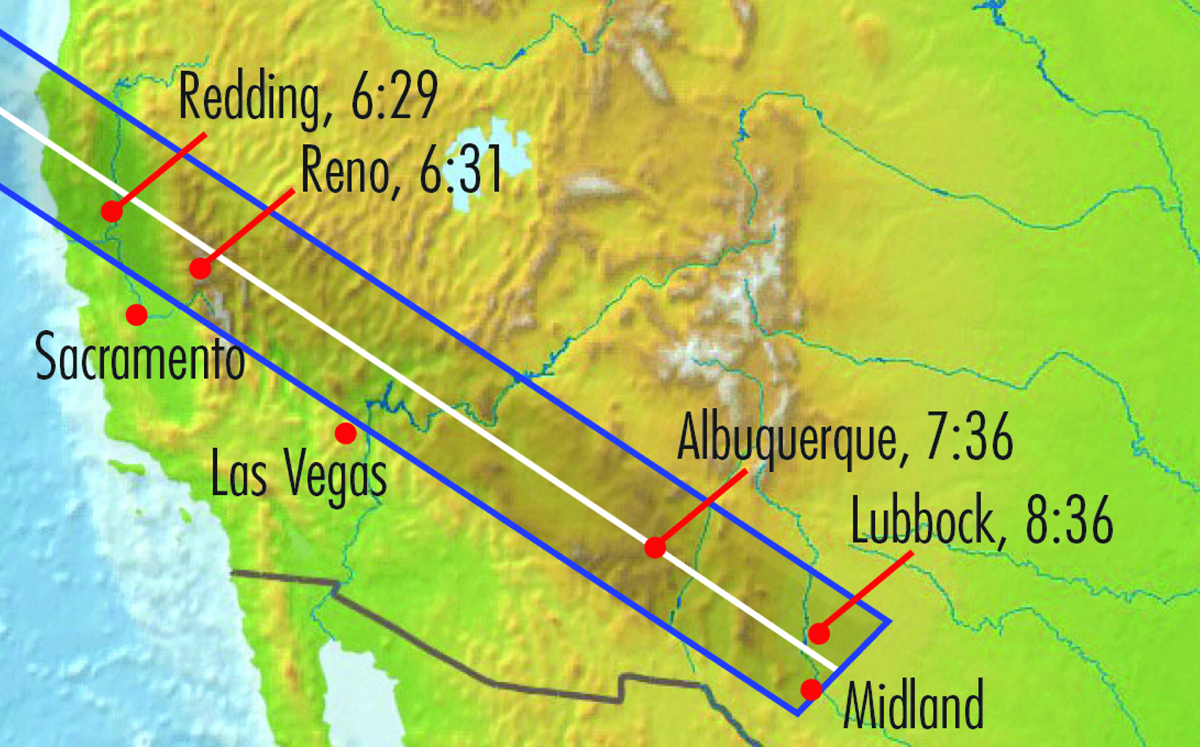
This map shows the path of 'annularity,' with maximum eclipse (p.m., local time) for sites along the path. Areas outside the path of annularity will see a partial eclipse.
Annular Solar Eclipse, May 20, 2012: U.S. Visibility
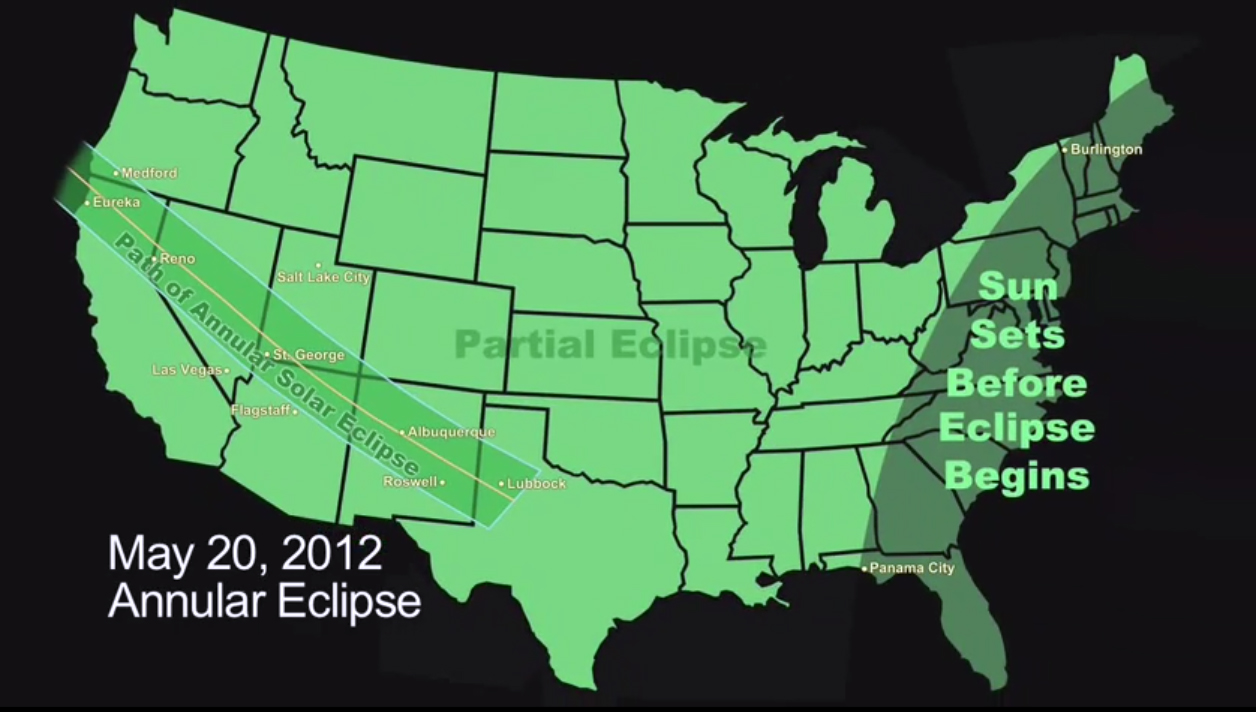
This NASA graphic of the United States depicts the path of the annular solar eclipse of May 20, 2012, when the moon will cover about 94 percent of the sun's surface as seen from Earth.
Annular Solar Eclipse Track: May 20, 2012
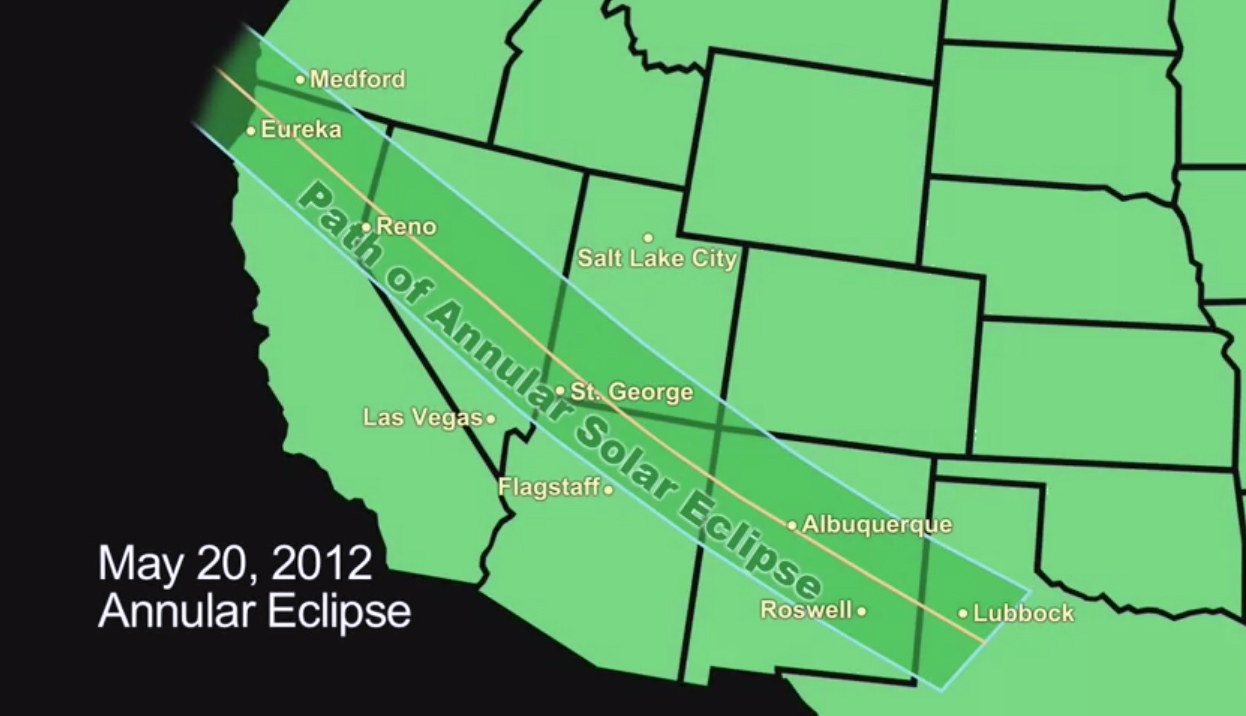
This NASA graphic of the western United States depicts the path of the annular solar eclipse of May 20, 2012, when the moon will cover about 94 percent of the sun's surface as seen from Earth.
Skywatching Spots for Solar Eclipse
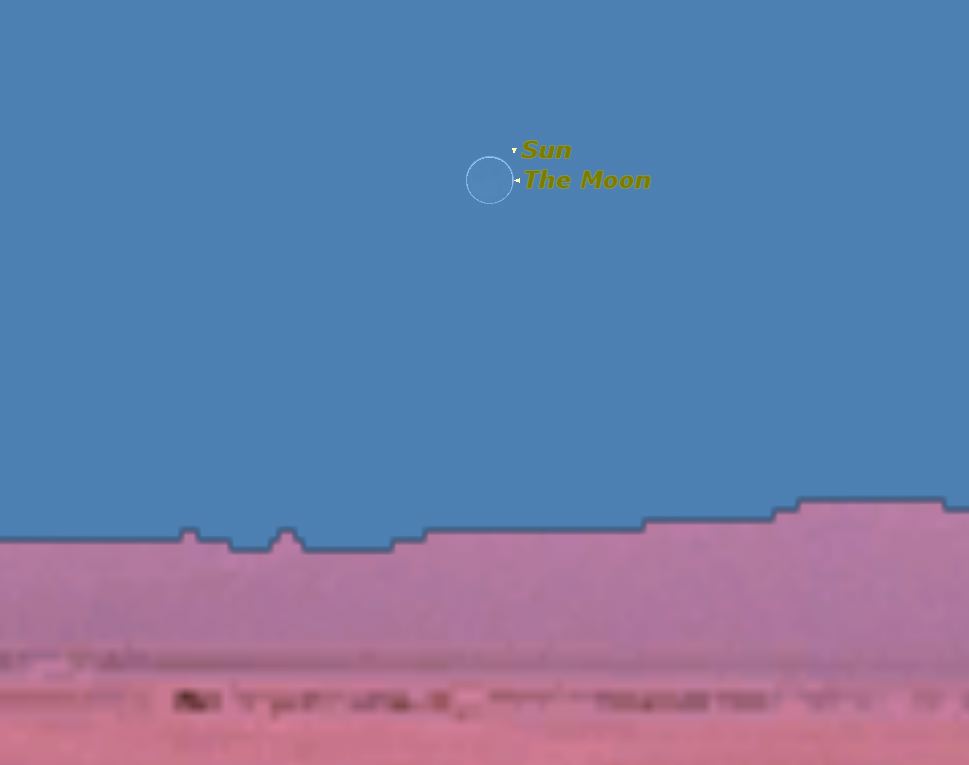
This sky map depicts the location of the sun and moon in the daytime sky during the annular solar eclipse of May 20, 2012 as viewed from North America. An annular solar eclipse occurs when the moon does not completely obscure the sun, leaving a bright ring around the moon's disk.
Guide to Solar Eclipses (Infographic)

How Solar Eclipses Work: When the moon covers up the sun, skywatchers delight in the opportunity to see a rare spectacle. See how solar eclipses occur in this Space.com infographic.
Get the Space.com Newsletter
Breaking space news, the latest updates on rocket launches, skywatching events and more!
How to Look at a Solar Eclipse Without Going Blind (Infographic)
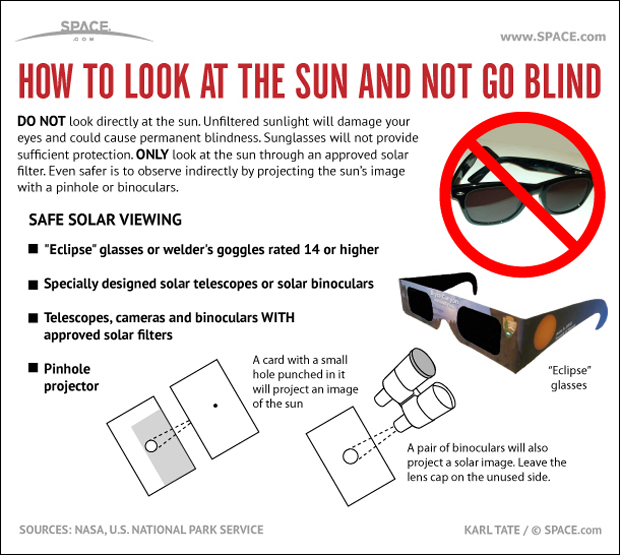
You should never look directly at the sun, but there are ways to safely observe an eclipse. See how to safely observe a solar eclipse with this Space.com infographic.
Solar Eclipse View Chart
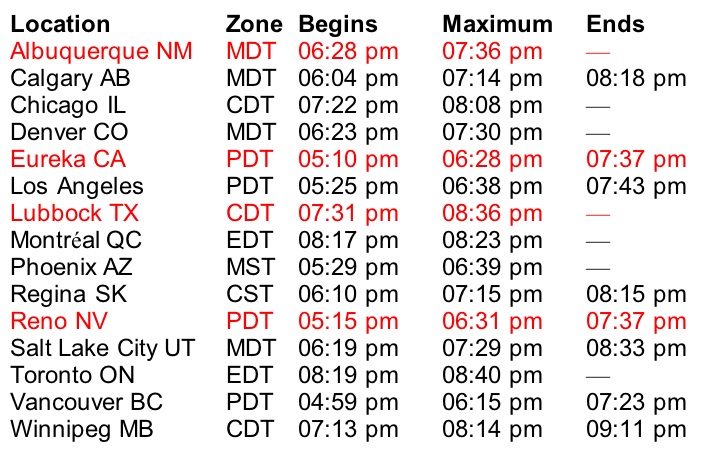
This chart notes the cities and times to view the annular solar eclipse of May, 20-21, 2012.
Annular Solar Eclipse: May 20, 2012 U.S. Ground Track
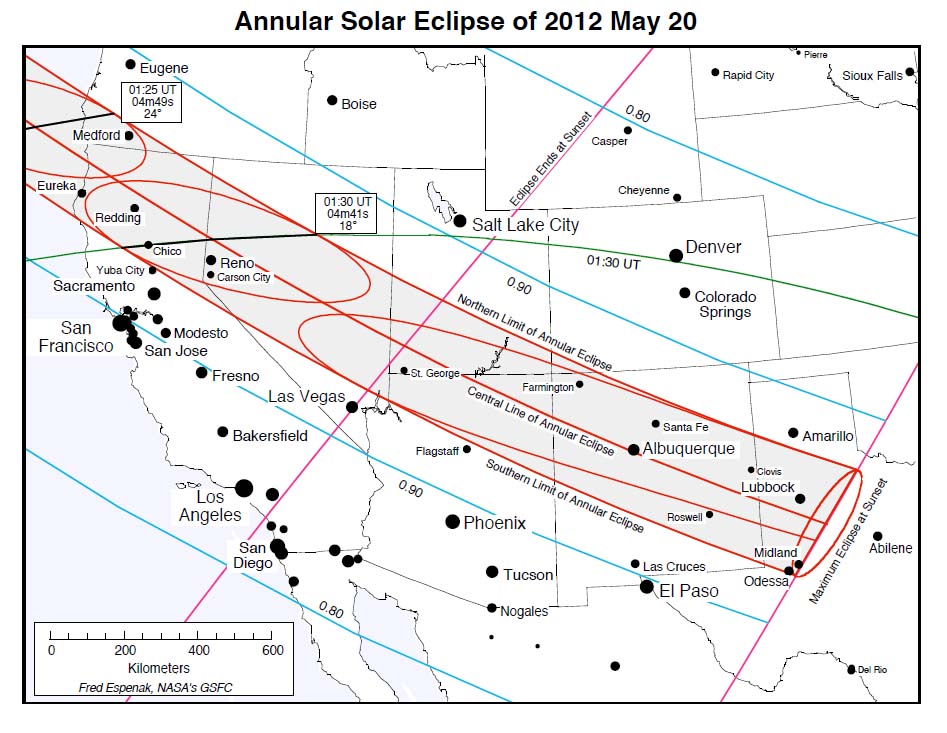
This chart shows the path of the May 20, 2012 annular solar eclipse across the western and southern United States. Major cities are listed inside the boundaries of the solar eclipse visibilty path.
Annular Solar Eclipse: May 20, 2012 Ground Track
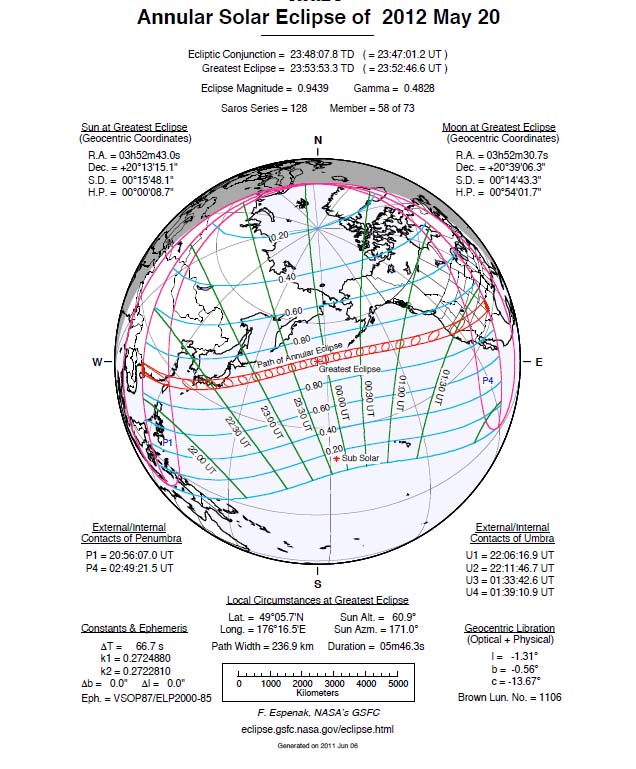
This chart prepared by NASA solar eclipse expert Fred Espenak details the path of the May 20-21 annular solar eclipse of 2012 across the Earth.
Join our Space Forums to keep talking space on the latest missions, night sky and more! And if you have a news tip, correction or comment, let us know at: community@space.com.

Space.com is the premier source of space exploration, innovation and astronomy news, chronicling (and celebrating) humanity's ongoing expansion across the final frontier. Originally founded in 1999, Space.com is, and always has been, the passion of writers and editors who are space fans and also trained journalists. Our current news team consists of Editor-in-Chief Tariq Malik; Editor Hanneke Weitering, Senior Space Writer Mike Wall; Senior Writer Meghan Bartels; Senior Writer Chelsea Gohd, Senior Writer Tereza Pultarova and Staff Writer Alexander Cox, focusing on e-commerce. Senior Producer Steve Spaleta oversees our space videos, with Diana Whitcroft as our Social Media Editor.








